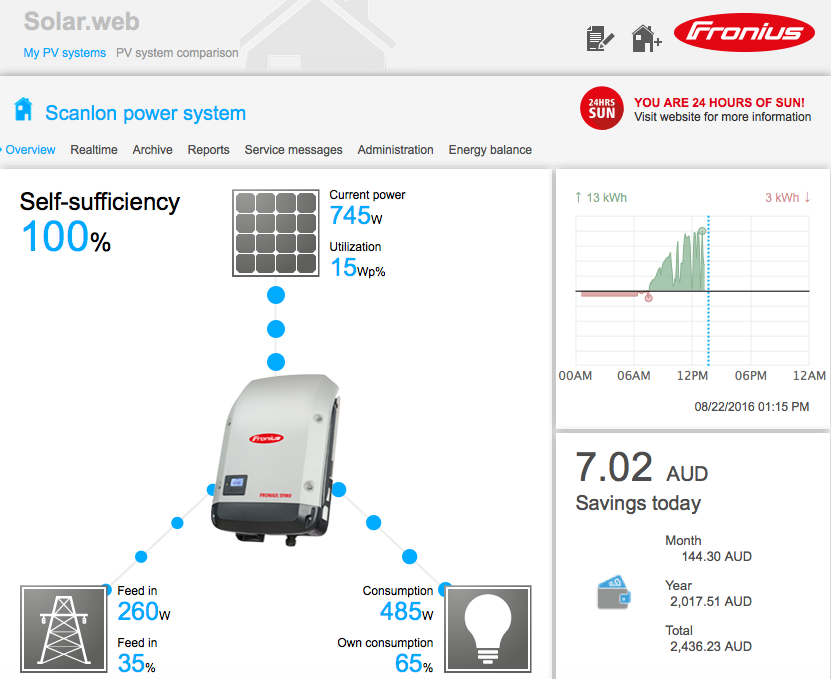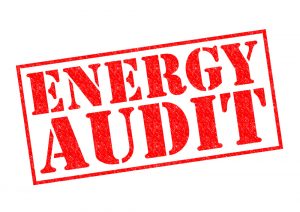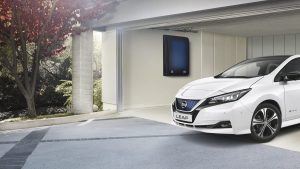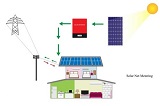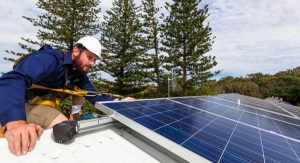Once your solar panels are installed, it’s not enough to flip the switch, start making power and just walk away. You probably want to be able to monitor your system, make sure that everything is working properly, and check your energy production and income numbers occasionally. Having a reliable monitoring system with a nice-looking graphical interface that is easy to use and easy to understand is important. Plus, it really impresses your friends!
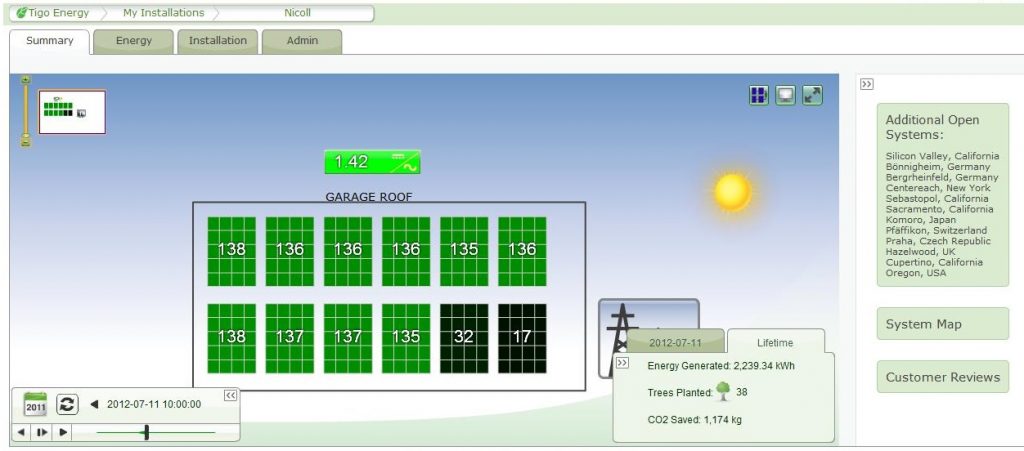 Tigo monitoring system showing reduced energy production by solar panels at the bottom right corner
Tigo monitoring system showing reduced energy production by solar panels at the bottom right corner
Up until a few years ago, most inverters had an LCD display right on the unit that was used to initialize the system, monitor production and do troubleshooting. They worked ok, but they were about as much fun to look at as a digital wristwatch. Then, a lot of third party monitoring systems appeared on the market that provided Ethernet connections to a PC and output data as a spreadsheet. Luckily, times have changed and monitoring systems have lead the way in the era of the “internet of things.” Now, you can get real-time information from your PV system whenever you want. Here are a few features to look for when considering how you want to interact with your PV system from your home computer, your tablet or your cell phone:
There are basically three parts to a monitoring system:
- Data Logger, which gathers the data;
- Communications Gateway, which delivers the info via Ethernet, radio, cellular, or wirelessly to a server, and a
- Web Portal which provides a graphical interface for you to look at your data. Some web portals allow you to share some or all your data publicly or keep it completely private. You can archive your data for years on the cloud or keep it only on your home computer.
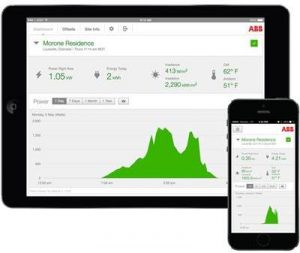
For microinverter and power optimizer systems, the data is more in-depth, since you can see what is going on at each individual panel. This is immensely helpful when troubleshooting a problem. The web portal will show you a “map” of the panels in the system, and you can see exactly where a malfunctioning panel or microinverter is.
 Enphase monitors energy production at each individual solar panel
Enphase monitors energy production at each individual solar panel
Most inverter manufacturers now include some sort of data collection either as part of the package or as an extra add-on. Fronius, Power-One, SMA, Enphase and many others have nice looking and easy to use web-based monitoring systems. There are also third party monitoring systems for all sorts of special applications if you aren’t a fan of what the manufacturer has to offer. Some are designed for simplicity for non-technical residential uses, some are designed more for commercial users, and still others are custom built for educational or research applications. Some very sophisticated products like the OWL Intuition-PV are available that not only monitor your solar but your entire energy usage and production profile. This can be a huge benefit of you are maximizing your efficiency, charging an electric vehicle or using a behind-the-meter storage system like the Tesla Powerwall.

Fronius monitoring system


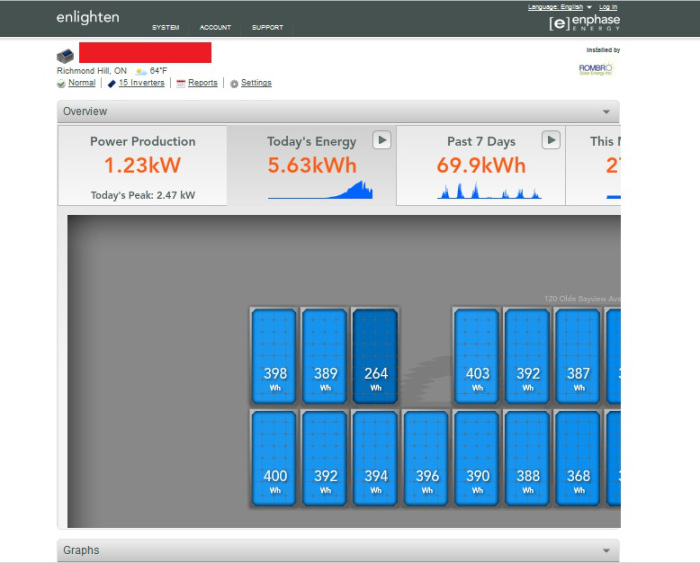 Enphase monitors energy production at each individual solar panel
Enphase monitors energy production at each individual solar panel